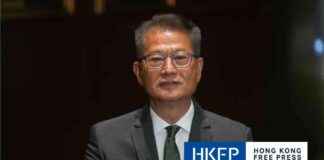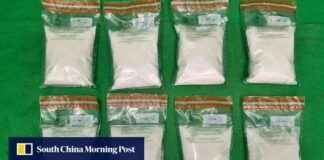Investors Shift Focus to Emerging Market Bond ETFs Amid Fed Rate Cuts
As global economic uncertainty looms, investors are reevaluating their portfolios and shifting their focus from Chinese stocks to emerging market bond exchange-traded funds (ETFs). The recent outflows from Chinese equity ETFs, such as the KraneShares CSI China Internet Fund (KWEB) and the iShares China Large-Cap ETF, signal a growing apprehension about China’s economic outlook. On the other hand, emerging market debt ETFs, like the iShares JP Morgan USD Emerging Markets Bond ETF (EMB) and the Janus Henderson Emerging Markets Debt Hard Currency ETF, are seeing increased inflows as investors seek alternative opportunities for returns amidst expectations of rate cuts by the US Federal Reserve.
China’s Economic Concerns Drive Investors Away
The recent outflows from Chinese equity ETFs reflect investors’ concerns about the uncertain economic environment in China. The KraneShares CSI China Internet Fund (KWEB) experienced its largest weekly outflow since August 2022, with US$238 million being withdrawn. Brendan McKenna, an emerging markets economist and FX strategist at Wells Fargo, noted that investors have been avoiding Chinese markets due to the lack of clarity on policy direction. Without clearer guidance from Chinese authorities, it is likely that investors will continue to steer clear of China’s local markets for the foreseeable future.
The iShares China Large-Cap ETF also saw outflows of nearly US$55 million last week, marking the 11th consecutive week of redemptions. This trend underscores the growing unease among investors about the Chinese economy and its potential impact on global markets. As trade tensions persist and economic indicators show signs of weakness, investors are seeking safer and more stable investment options.
Emerging Market Debt ETFs Gain Favor
Amidst the uncertainty surrounding China, investors are turning to emerging market debt ETFs as a more attractive investment option. The iShares JP Morgan USD Emerging Markets Bond ETF (EMB) recorded US$238 million in inflows last week, indicating a shift towards fixed income securities in emerging markets. The Janus Henderson Emerging Markets Debt Hard Currency ETF also saw an influx of US$157 million, highlighting the growing interest in emerging market debt instruments.
Brendan McKenna of Wells Fargo pointed out that the Federal Reserve’s pivot towards rate cuts has sparked risk-on behavior among investors, particularly in emerging markets. Lower interest rates in emerging markets can support fixed income investments, especially in countries where central banks have room to maneuver on monetary policy. As investors seek higher yields and diversification away from traditional assets, emerging market debt ETFs offer an appealing alternative.
Investors Seek Diversification and Yield in Emerging Markets
The US$16.1 billion iShares MSCI Emerging Markets Ex-China ETF (EMXC) continues to attract investors looking for exposure to emerging markets while avoiding the uncertainties surrounding China. With approximately US$194 million in inflows last week, the EMXC ETF represents a growing appetite for riskier assets outside of China. As investors navigate a volatile global market environment, diversification across emerging markets can provide a hedge against geopolitical risks and economic uncertainties.
Emerging market assets rallied on Friday following Federal Reserve Chairman Jerome Powell’s remarks about adjusting monetary policy, leading to a surge in risk appetite across global markets. Inflows to US-listed emerging market ETFs surged to US$554.7 million in the week ending August 23, compared to gains of US$20.2 million in the previous week. This trend indicates a growing confidence in emerging market opportunities and a willingness to explore alternative investment options beyond traditional equities and fixed income securities.
In conclusion, the shifting focus of investors from Chinese stocks to emerging market bond ETFs reflects a broader trend of reevaluating investment strategies in response to evolving market conditions. As geopolitical tensions and economic uncertainties persist, investors are seeking diversification, higher yields, and risk mitigation through exposure to emerging market debt instruments. The upcoming Federal Reserve rate cuts are expected to further drive interest in emerging market assets, as investors position their portfolios to capitalize on potential opportunities in a changing global economic landscape.



















